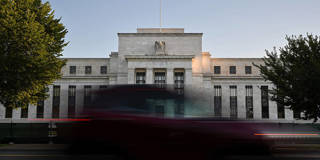Central banks cannot solve all that ails our economies and should not be expected to solve problems that other actors can better address. Instead, central banks and their leaders should focus on three objectives: price stability, financial stability, and macroeconomic stability.
WASHINGTON, DC – As the world continues to experience a prolonged period of unanticipated inflation caused by economic and non-economic shocks over the past four years, it is time for a frank reassessment of central banking and monetary policy. It is time to acknowledge what we got right and where we went wrong, to recognize the limits of our data and understanding, and to own up to the weaknesses of our models and frameworks. Above all, it is a time for humility – and for a return to core goals.
Central banks cannot solve all that ails our economies. They should not be expected to solve problems that other actors can better address, such as collective global goals outside their competence. Instead, central banks and their leaders should focus on three objectives: price stability, financial stability, and macroeconomic stability. Achieving these three goals is hard enough. We should dial back public expectations that central banks can or should do more than this.
What does a humble approach to central banking mean in practice? For starters, central banks need to be more realistic about their ability to forecast macroeconomic outcomes with great precision. Their recent track record has demonstrated this. If we look at the Federal Reserve Board and the “hair” diagram, as inflation jumped, staff economists repeatedly projected a return to 2% inflation from wherever the current estimate stood. Again and again, the forecasts were wrong – and in both directions.

WASHINGTON, DC – As the world continues to experience a prolonged period of unanticipated inflation caused by economic and non-economic shocks over the past four years, it is time for a frank reassessment of central banking and monetary policy. It is time to acknowledge what we got right and where we went wrong, to recognize the limits of our data and understanding, and to own up to the weaknesses of our models and frameworks. Above all, it is a time for humility – and for a return to core goals.
Central banks cannot solve all that ails our economies. They should not be expected to solve problems that other actors can better address, such as collective global goals outside their competence. Instead, central banks and their leaders should focus on three objectives: price stability, financial stability, and macroeconomic stability. Achieving these three goals is hard enough. We should dial back public expectations that central banks can or should do more than this.
What does a humble approach to central banking mean in practice? For starters, central banks need to be more realistic about their ability to forecast macroeconomic outcomes with great precision. Their recent track record has demonstrated this. If we look at the Federal Reserve Board and the “hair” diagram, as inflation jumped, staff economists repeatedly projected a return to 2% inflation from wherever the current estimate stood. Again and again, the forecasts were wrong – and in both directions.